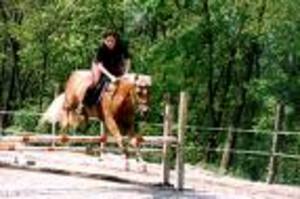Cheap Trick toured for four years before recording and releasing their debut album in 1977. When it came out it was met by confusion by music critics. They simply couldn’t understand why the band looked the way it did or sounded the way it did. They were surely a band in the wrong place at the wrong time. Yet because they had spent so long touring they had an acute awareness of what would sell. And sell it did–well in Japan. They had supported bands like Kiss, AC/DC and Boston, all big players and Cheap Trick got a idea of what it must be like to be loved and famous. In America it was very different. The American rock fan didn’t really discover Cheap Trick until 1979 when they released a live album comprised of tracks taken from a huge Budoken Stadium gig. This time they were in the right place at the right time.
The guitarist and songwriter, Rick Nielson, was 32 when Cheap Trick recorded their first album. He had spent twelve years in various bands. He, Tom Peterson and Bun E. Carlos on drums, had been in a band called Fuse. They gigged across Europe a fair bit before in 1970 to America where they met Robin Zander, a folk-pop singer. Nielson kept the melody and hook central to his songs and used metal riffs to undermine any blatant pop sensibilities in the songs. His lyrics were always ironic, with a little humor and realism thrown in for good measure. Something similar to the up and coming punk bands. When Zander sung the songs he used all his years experience as a folk singer to deliver them with a direct quality and the minimum amount of fuss.
Their debut was put out in 1976 and starts with the track ‘ELO Kiddies.’ Its sort of an autobiographical song which indirectly pays tribute to ELO founder Roy Wood. Then there’s a song about the connection between the media and mass murder called ‘The Ballad of TV Violence’ and ‘He’s A Whore,’ covered by Big Black on their 1987 album ‘Songs About Fucking.
When the eighties came around, Cheap Trick joined the ever growing throng of bands playing terrible soft rock. They experienced some pressure from their record label who were expecting an album which sold as much as the popular ‘Live At Budoken’ album. To appease the label Cheap Trick started to buy songs from other songwriters. Their album sales went up and they had some hits, but the band had lost its direction and its focus as well as its pride. It could be said that they were another band to drown between the islands of artistic integrity and corporate expectations, but that would sound a bit rum. However, with the eighties coming to an end Cheap Trick were thrown a lifeline, by the likes of Billy Corgan, from the Smashing Pumpkins, and Kurt Cobain. They were being talked about as influences by some of grunge and alt.rocks finest. So, the man from Big Black himself, Steve Albini, produced a session for the band, which led to a SubPop single, a birth on the good-ship Lollapalooza, and a support slot on a national tour with Corgan’s Pumpkins.
They went on to play a series of shows. Each night they would run through one of their early albums in its entirety, and the American rock consumer loved it, once again. Yes, the songs they loved were Cheap Trick’s early tracks, but the again, weren’t those the ones which were written out of artistic, rather than commercial, necessity. There’s a lesson there somewhere.

